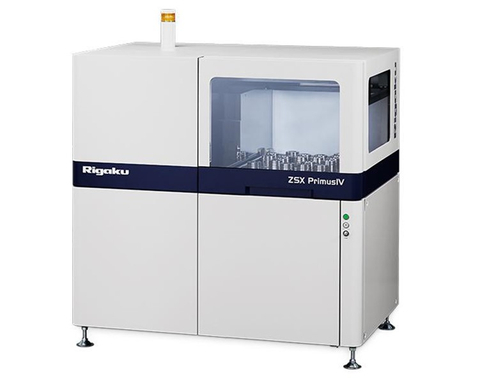Rigaku Corporation, a Rigaku Holdings Group company and Rigaku global solution partner in X-ray analytical equipment (head office: Akishima, Tokyo; president and representative director: Jun Kawakami; hereinafter “Rigaku”), has completed analysis of particles from 101955 Bennu, a near-Earth carbonaceous asteroid classified as a type B. The analysis was performed using ZSX Primus IV, a wavelength dispersive X-ray fluorescence spectrometer.
This press release features multimedia. View the full release here: https://www.businesswire.com/news/home/20240508939191/en/

ZSX Primus IV (Photo: Business Wire)
The particles from Bennu are a sample obtained by OSIRIS-Rex, a spacecraft of the United States National Aeronautics and Space Administration (NASA). This analysis constitutes the second time Rigaku has been tasked with conducting analysis related to Bennu. On the first occasion, in December 2023, Rigaku measured water and carbon content in a sample from the carbonaceous asteroid using thermoanalysis.
The X-ray fluorescence spectrometry was conducted by the Rigaku Application Laboratory XRF Analytical Group in the presence of Professor Hisayoshi Yurimoto of the Faculty of Science, Hokkaido University, who directed the chemical analysis of samples brought back from the asteroid Ryugu by the Hayabusa 2 spacecraft.
The purpose of the analysis was to ascertain the content of major and trace elements including carbon and oxygen in sample. In the current measurements, quantitative analysis was performed on 26 elements Results of thermoanalysis and X-ray spectrometry were combined to learn about the history of Bennu and its similarities and differences with Ryugu.
The analysis of Bennu is now proceeding by worldwide project teams. A unique feature of the work of the Japan team, under the direction of Professor Yurimoto, is the application of thermoanalysis using thermogravimetry along with mass spectrometry and X-ray spectrometry using a wavelength dispersive X-ray fluorescence spectrometer.
One advantage of the Rigaku approach to thermoanalysis is that quantitative-analytical equipment is used in tandem, enabling Rigaku to separate and measure each element and type of molecule, with the result that unprecedented data can be obtained. Moreover, X-ray fluorescence spectrometry plays an exceptionally vital role: As the research method shifts toward inductively coupled plasma mass spectrometry (ICP-MS), X-ray fluorescence spectrometry can analyze major components such as carbon, oxygen, silicon and sulfur that are difficult to analyze using ICP-MS.
Professor Yurimoto commented: “The performance of the equipment is obviously vital, but in the end, what makes the difference is people. When conducting analysis on the leading edge of the field, the question of who does the analysis is paramount. I asked Rigaku to perform the analysis because this company brings to the table not only outstanding equipment but also superb engineers.”
Rigaku will continue to pursue close partnership with academia, contributing to the development of society through the advance of science and technology.
Related information
-
Press release regarding thermoanalysis conducted in December 2023
URL: https://rigaku.com/about/news-and-press-releases/rigaku-analyzes-samples-from-nasa?hsLang=en
Results of Rigaku’s Participation in the Initial Analysis Project of Ryugu Sample
In June 2019, Rigaku took part in the Ryugu project as a joint research partner. In 2021, the content percentages of elements in the sample from Ryugu were determined using ZSX Primus IV, a wavelength dispersive X-ray fluorescence (WDXRF) spectrometer. Measurements using TG-DTA/GC‐MS determined that the moisture content of the sample from Ryugu differed from that found in meteorites of carbonaceous chondrite, which are thought to reflect the mix of elements in the primordial solar system. These data now serve as the basic data from the Ryugu sample that research groups around the world are using to conduct a wide range of analyses.
Rigaku’s analytical results are cited in a paper by the chemical analysis team (led by Prof. Yurimoto) of the initial analysis team of the Hayabusa 2 mission, and are published in Science, a US-based scientific journal.
About The Rigaku Group
Since its establishment in 1951, the engineering professionals of the Rigaku group have been dedicated to benefiting society with leading-edge technologies, notably including in its core fields of X-ray and thermal analysis. With a market presence in over 90 countries and some 2,000 employees from 9 global operations, Rigaku is a solution partner in industry and research analysis institutes. Our overseas sales ratio has reached approximately 70% while sustaining an exceptionally high market share in Japan. Together with our customers, we continue to develop and grow. As applications expand from semiconductors, electronic materials, batteries, environment, resources, energy, life science to other high-tech fields, Rigaku realizes innovations “To Improve Our World by Powering New Perspectives.”
For details, please visit rigaku.com (As of November 30, 2023)
View source version on businesswire.com: https://www.businesswire.com/news/home/20240508939191/en/
Contacts
Press Contact:
Sawa Himeno
Head of Communications Dept., Rigaku Holdings Corporation
prad@rigaku.co.jp
+81 90 6331 9843













